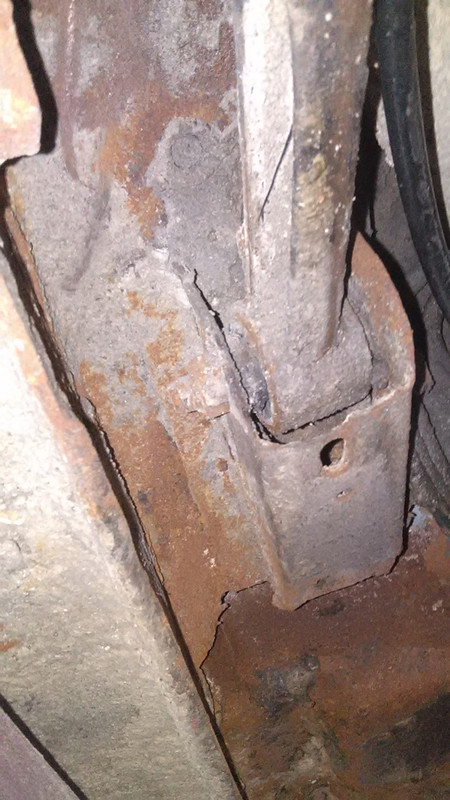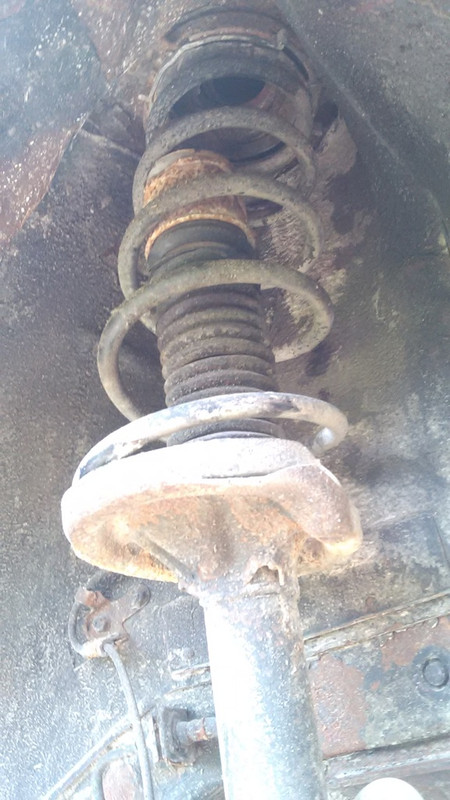I especially enjoy the bit where it says "asbestos free."
Nothing screams "there was once a better product than removal of something particularly hazardous for ones' health!
Now if Mazda could have made the decision to use metals not sourced from the Titanic, that would be swell!
On the rust-related note, I figured I'd share my anecdotal background on paint and rustproofing, being that I (for better or worse) work at a company that builds paintshops.
TL;DR for below: paint, and the processes involved are kind of complicated, and have improved quite a bit in the past 20 years. I'll shed light from my brief time in the industry thus far, because I like writing walls of text.
Much of the protection to the sheetmetal on a vehicle probably comes from the metal choice (I'm spitballing at this one, but I imagine there are some metals out there that are subpar in terms of their ability to resist corrosion). Also,DRAIN HOLESare pretty important too. See below to hopefully glean why that is. Barring these engineering decisions, we can apply coatings to metal to prevent them from succumbing to the elements (paint! and other things, too)
Where we come into play is regarding the pretreatment-ecoat machines, ovens, sealer systems, and eventually paint and possibly cavity wax systems.
Removing the grease from the metal as it comes in from body weld or whatever colloquialism denotes the assembly of the body-in-white is pretty important, as that will affect the ability of the ecoat to adhere to the vehicle. Being that the rockers, interior panels, etc., are pretty tucked away, it can be somewhat difficult to clear these areas off if a system isn't designed right. Think car wash but with more jets, which blast degreasers, aimed in particularly strategic manners, into and onto the vehicle. Prior to the ecoat stage, the body is hopefully cleared off/out of the degreasers, as ecoat material is far from cheap, and minimising carryover is important. This isn't rocket science, but it's got a decent impact on the effectiveness of things down the line. Building blocks and all that. If the individual(s) setting up and monitoring this system are lax, and the customer reps for [OEMs, Mazda, whoever] aren't privvy to what's ideal, then that will affect the next processes (this is common in every step, mind you)
Next comes the ecoat-deposition (ED - not that kind, or e-coat) where this paint bath is electrically coated onto the vehicle body. I'd like to liken it to a waterborne powdercoat in the simplest of terms, but I'm not sure that's fair to the ecoat suppliers as they have to carefully monitor the chemical balances and all that jazz. The same assumptions are made here; old systems involve tanks where the vehicle is conveyed through, into, and out of, and there are spray nozzles that are carefully aimed to, again, cover as much of the vehicle body as possible both inside and out. New systems improve on the coverage, but are obviously more complex. Adequate coverage does a decent enough job of protecting the metal (now underneath this coat) from rusting, however this material isn't UV-tolerant (which is where paint comes into play)
But before paint is applied, sealer materials are applied, and before THEY are applied, the car takes a trip through its first oven of the paintshop. Just like there's a perfect spot for baking cookies, there's a perfect spot for baking a car, and since all the metal is of varying thicknesses, it's a bit trickier than "turn up the heat!" Of course, the ideal cookie is subjective in terms of its "perfection," whereas the ecoat has a specific temperature curve, and bake time, to achieve. in order to be considered "perfect." You can't go willy-nilly blasing the car with heat, which would make things easy, if a little smokey. Assuming this is ideally done, you'll have an ecoat that's baked onto the vehicle well, has adequate scratch resistance (among other criteria) and from there the vehicle will make its way to the sealer areas.
Assuming you've seen some of the seam sealer areas, at the bottoms of the doors, bootlid, hood, scattered throughout the engine bay and other places on the cars, it can sometimes look a right mess, and other times looks very carefully applied. This is due to partial automation of these processes. Humans have more dexterity than robots, which ensures these overlords won't smite us entirely, yet. Obviously humans program the robots, so subjectivity comes into play here, where some seams may not be deemed as important as others, so this could lead to water sitting on these seams and we know what happens from there. Hem flanges are fun, because you've got to coat the outside of this joint, but the inside of the joint (inside the door cavity) is hard to get to. More on prevention of moisture into this area shortly.
Then the vehicle may go through another oven on its way to the spraybooths, or it doesn't. That is up to the supplier of the sealer material and paint. But we'll assume the concepts are the same in all of the ovens from here on out: bake at the right time/temp/rate, and things are happy. Fall outside this window and there are concerns that the material (whatever it may be) won't adhere well, will flake, will be too soft, will not have the appearance desired, etc. Whereas paints for household consumption are able to be applied at a wide-ish range, automotive OEM paints are picky, and are best applied within a thin window of temperature and humidity.
Paint is paint, and protects the ecoat material from being deteriorated by the UV light of the sun. There's film build to worry about here (Mazda is conservative on thickness here, but think about the saving$ (not being rude, but there's a lot to be saved with thinner film build - fewer filter changeouts, lower energy consumption of fans through running lower volumes, and less material consumed, for example))
Then eventually the vehicle makes its way to cavity wax (at least in modern systems) where it gets sprayed or injected with the wonderful stuff that repels water. If you've seen new cars, and looked at the holes that are at the bottoms of the doors for example, it's a clear film (like the wonderful Fluid Film, or SEM cavity wax) that should hopefully repel water from finding its unwelcome home in the depths of our cars.
Which, is the most long-winded, but hopefully informative way to say,
@pcb is most definitely right to suggest FF or similar alternatives to slow the continuation of corrosion of our coveted cars. Also why POR-15 and other paints suggest adequate degreasing prior to application - for good adhesion.
Hopefully this helps shed light on why some cars might rust while others seem to last forever.








